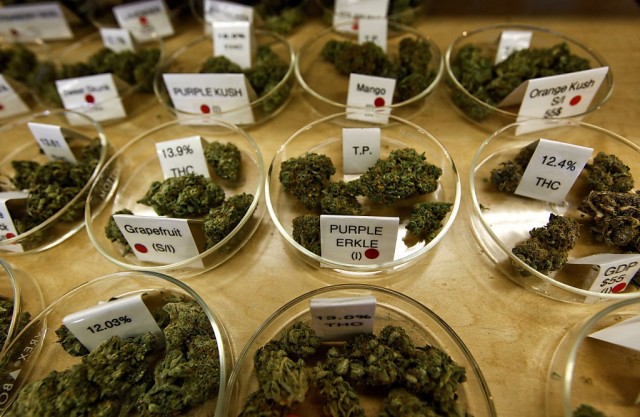 Despite the movement of vendors from the streets to dispensaries since the legalization of cannabis, the weed you purchase legally at a government sanctioned dispensary is still just as variable as the strains you might buy from a dealer. The strains sold at dispensaries and clinics still vary widely in potency, chemical content and fungal and pesticide contamination.
Despite the movement of vendors from the streets to dispensaries since the legalization of cannabis, the weed you purchase legally at a government sanctioned dispensary is still just as variable as the strains you might buy from a dealer. The strains sold at dispensaries and clinics still vary widely in potency, chemical content and fungal and pesticide contamination.
In the past 40 years, the THC content in cannabis has been rapidly increasing. Gizmodo writer Andrew Tarantola explains:
“On average, weed in the 70s contained about .75 percent THC by volume; by the 90s, it had risen to around 4 percent; in 2010, the average jumped to around 10 percent; and today, I can walk into the Green Cross and have my pick of a half-dozen strains topping 20 percent. Some labs are even reporting individual strains containing more than 30 percent THC.”
Thanks to federal prohibition, we don’t know very much about the cannabis being sold in dispensaries around the country. The federal government still classifies cannabis as a Schedule I narcotic. According to the DEA’s website, “Schedule I drugs, substances, or chemicals are defined as drugs with no currently accepted medical use and a high potential for abuse. Schedule I drugs are the most dangerous drugs of all the drug schedules with potentially severe psychological or physical dependence.”
Yes, really, the feds are still claiming cannabis has no medicinal benefits. This prevents federal researchers from the Food and Drug Administration from performing tests on cannabis to make sure they are safe for consumption.
Mike Sugarman of KCBS Radio purchased a wide variety of cannabis buds, edibles and shatter from dispensaries around San Francisco and Oakland and tested them at an independent facility, Oakland’s Steep Hill Labs. The test results were daunting. The potency of edibles was frequently mislabeled and inconsistent, mold and pesticides were found on about half of the purchased buds, and benzene was even found in the hash.
From the report:
“The one that was the worst claimed to be 100 milligrams, it was 1.3. That was the Edipure brand. That’s 98.7% off. Most others were only half the strength they claimed, or a quarter. Even gummy bears and lozenges in the same pack had great variations from one piece to another.”
Similar tests in Colorado, where the market is supposedly more regulated, yielded similar results, with edibles testing at far lower concentrations than they were labeled with.
Improvements in lab testing and accurate labeling of cannabis is essential for safe consumption as cannabis continues to be legalized in different places around the world. This issue just demonstrates yet another problem caused by the federal prohibition of cannabis.









